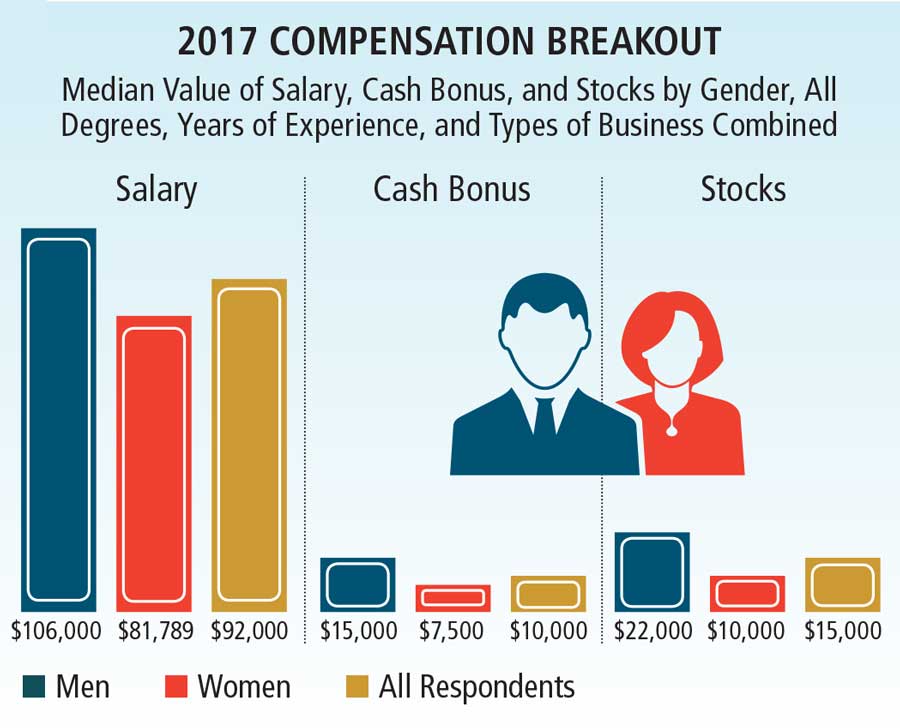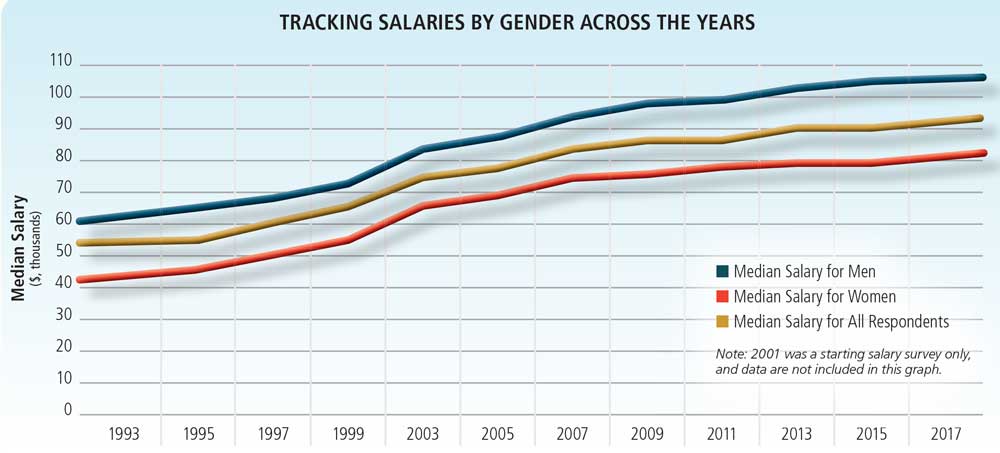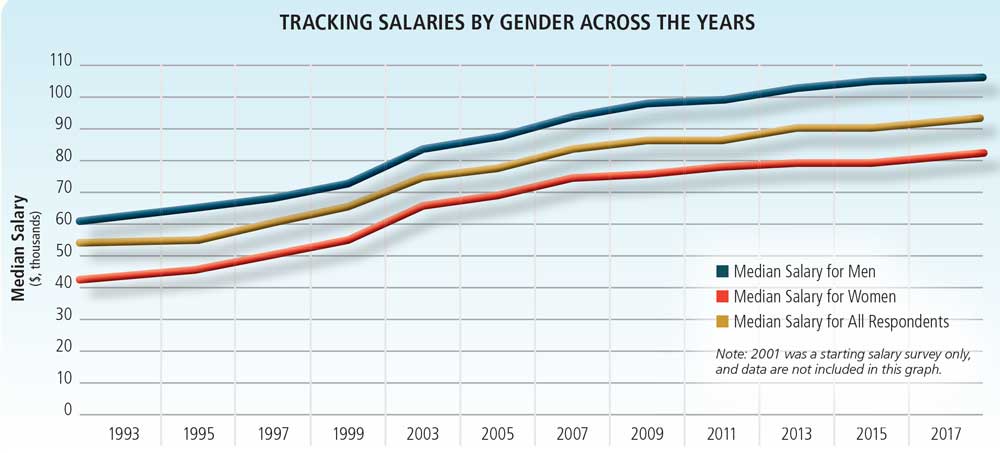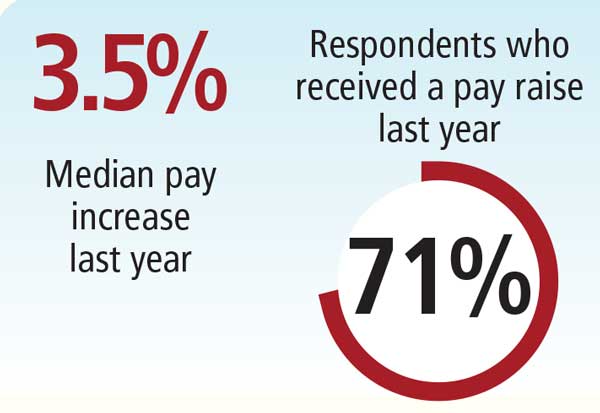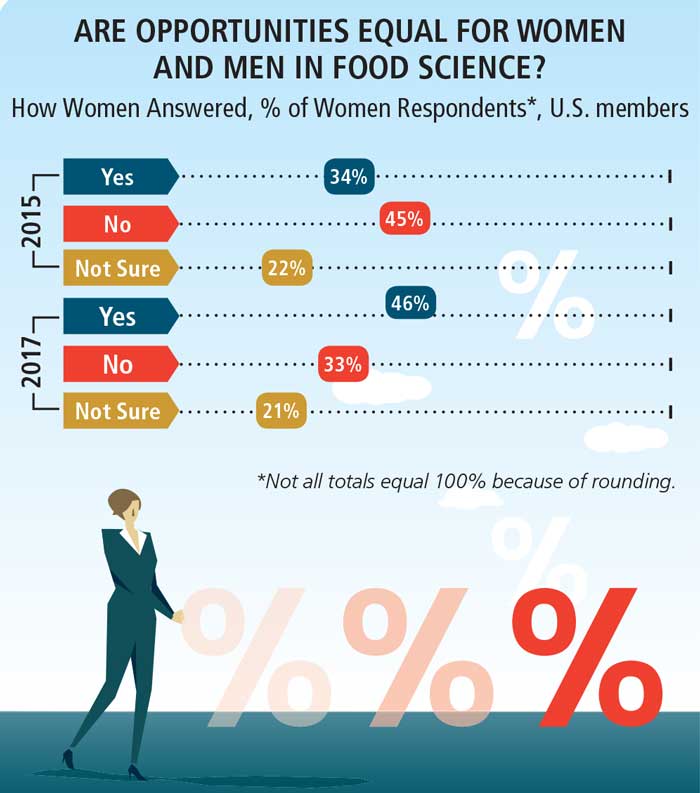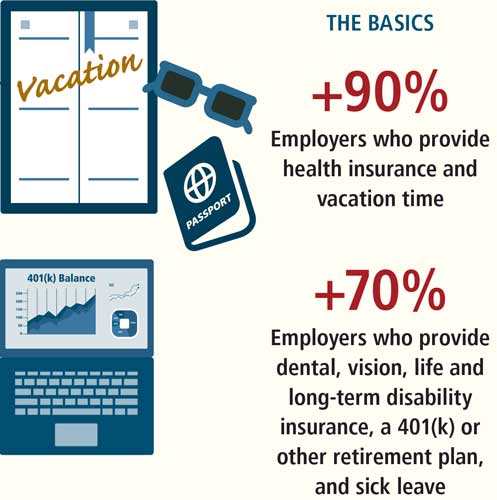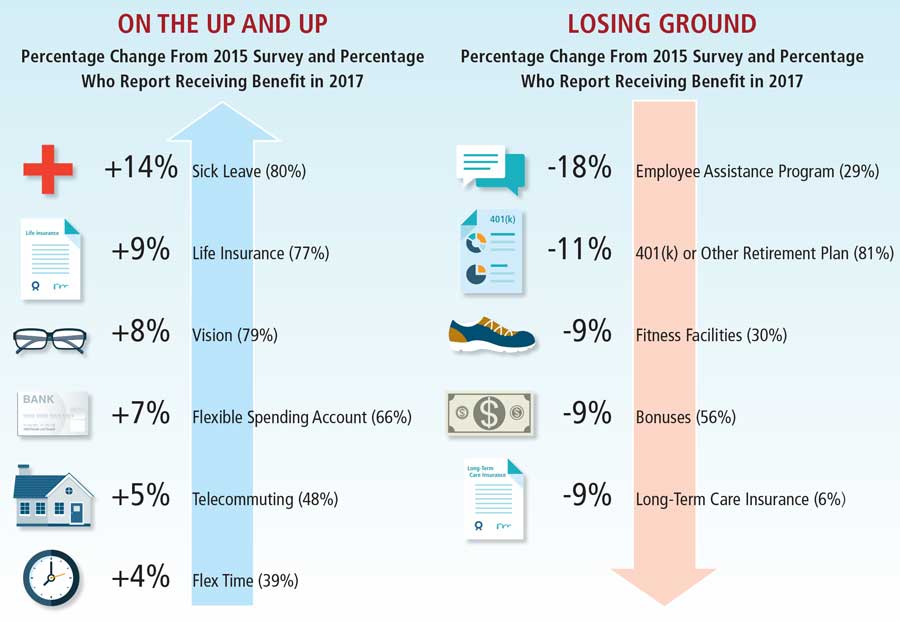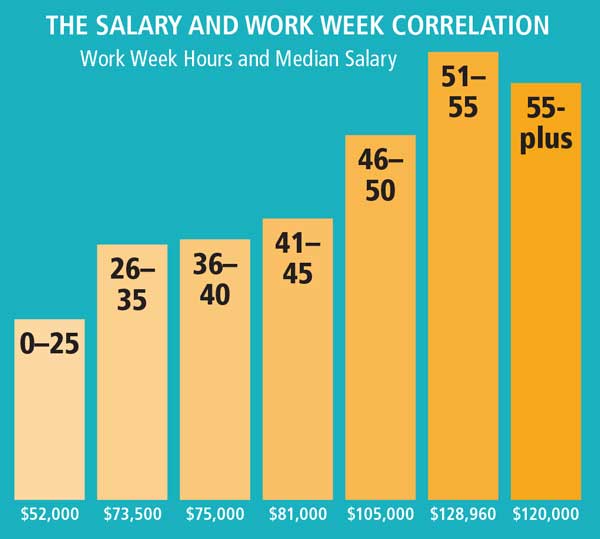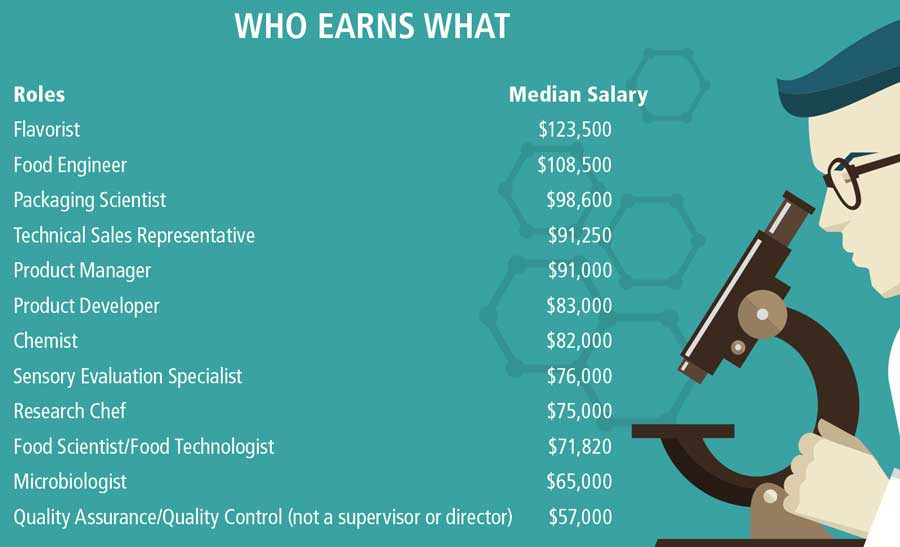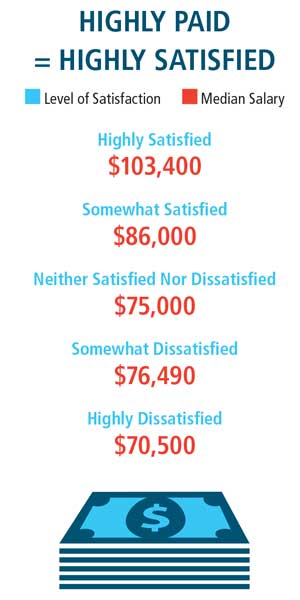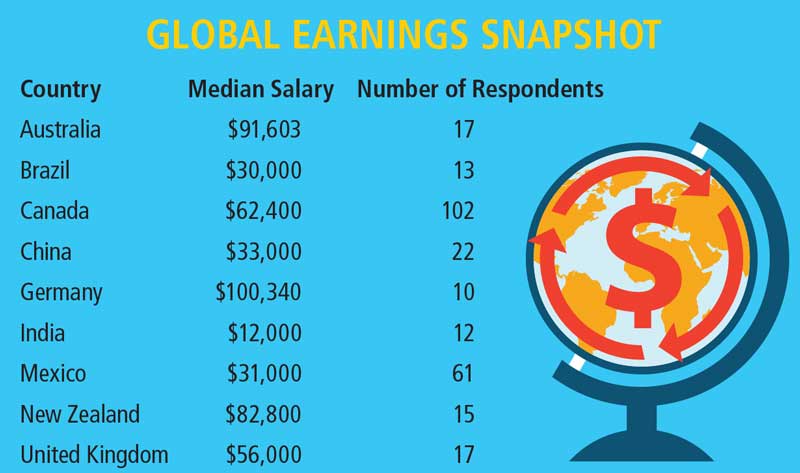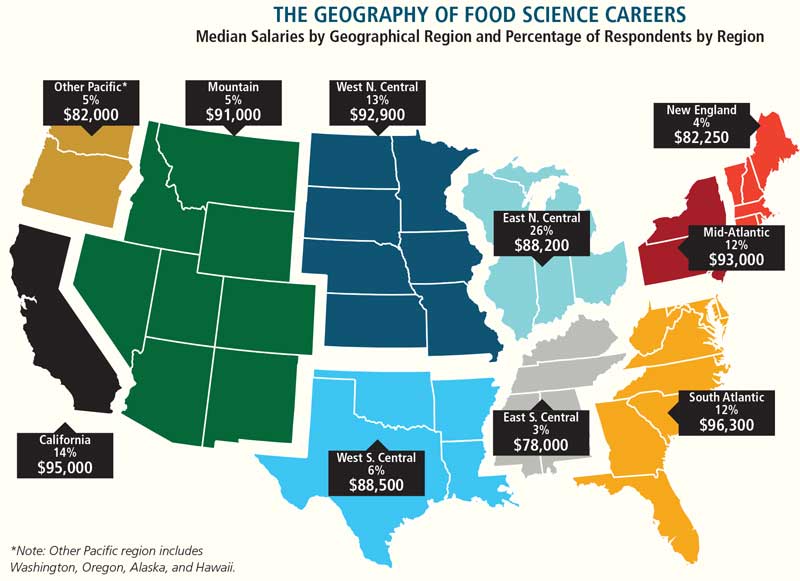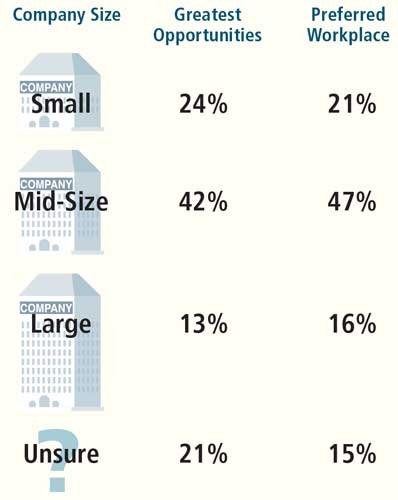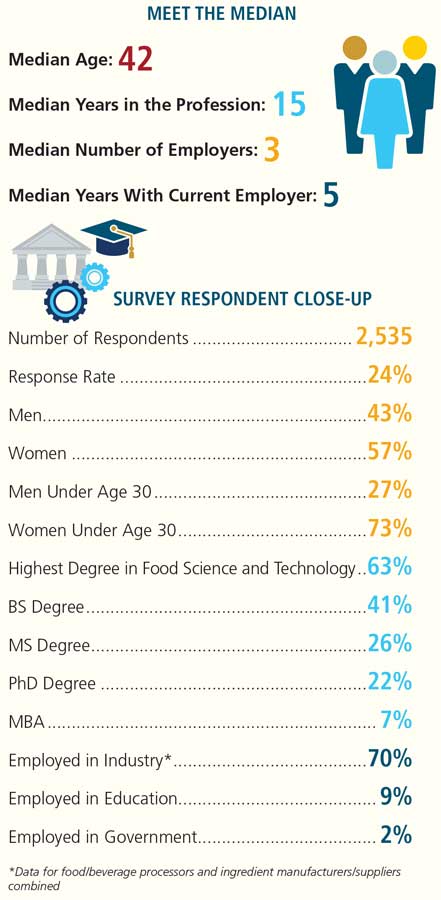
Earnings Grow, Wage Gap Shrinks
IFT’s biennial Employment and Salary Survey delivers the latest data on the food science profession: what people earn and how they feel about their jobs.
Article Content
THE BIG PICTURE
Food science salaries got a bump in 2017, climbing 2.2% to a median of $92,000 after remaining flat in 2015, IFT’s biennial Employment and Salary Survey showed.* In 2015, with the compensation climate still tepid in the aftermath of the recession of 2007–2009, the median salary was $90,000, the same as in 2013.
Today’s economic climate is more positive, however, and the job market is strong, recruiters report. “It’s what I would call a candidates’ market right now. There are a lot of job opportunities out there,” says Tim Oliver, senior partner with food recruitment firm OSI.
“Salaries have gone up in the last couple of years,” adds Moira McGrath, president of OPUS International, a food science–focused executive search firm. “It’s a very viable market.”
![]()
This year’s survey, which drew responses from more than 2,500 IFT members in the United States, brought good news for women in the profession: the gap between men’s and women’s salaries is narrowing. While women food scientists continue to earn just about 77 cents for every dollar that their male counterparts make, that’s up from 2015, when women’s food science compensation was 75% of men’s.\In addition, women’s salaries are growing faster than men’s. According to the survey, the 2017 median salary for women was $81,789, up 3.5%, versus a 1% increase to $106,000 for men. Bonuses for women also increased substantially; in 2017, the median bonus for women who received them was up 25%, or $1,500, to $7,500. The median bonus for men increased by just $100, but at $15,000 was still twice the amount women received.
The survey findings make it clear that times are changing for women working in the science of food. Younger women in the profession have achieved salary parity with men—something that has eluded older women. For men and women in their 20s, median food science salaries are equal at $60,000. For women in their 30s, there is a relatively modest salary gap of 6%, but those in their 40s, 50s, and 60s experience a gender salary gap that ranges between 13% and 15%.
When considering the salary gap between men and women, it should be noted that the percentage of men with PhDs (30%) is nearly twice that of women (16%), and the median salary for those with doctorates is higher than for those with bachelor’s degrees or master’s degrees. MBA degrees are another strong contributor to higher salaries, and 9% of male respondents have MBAs versus 6% of female respondents.
GENDER EQUITY
What Women Have to Say About PayDo women think that their opportunities for advancement and compensation in food science are equal to men’s? Nearly half (46%) of 2017 respondents say that they are—a substantial increase from the 34% who responded that way in 2015.
The perspective shift may relate to the fact that women in their 20s and 30s represent nearly 31% of all survey respondents, and survey data show that the gender pay gap doesn’t exist for those in their 20s and is much smaller for women in their 30s than it is for older women.
The survey included an international component, and women IFT members outside the United States saw gender-related career barriers as less of an issue. More than half (56%) said they felt their opportunities were equal, 24% said they were not, and 20% weren’t sure.
Pay Equity Strategy Backfires
Companies like Google, Facebook, and, most recently, Amazon have been leaders in an initiative to help shrink the gender salary gap by banning recruiters and human resources professionals from asking candidates about their salary history. In addition, more than a dozen states and cities have passed legislation to prevent the practice. Doing so can help level the playing field for women and members of minority groups, who have historically tended to earn less than men, the thinking goes.
Research findings from PayScale, a compensation data and software company, suggest it may not help, however. The company surveyed more than 15,000 job seekers last year and asked them whether they had disclosed their salaries at previous jobs during the process of interviewing for a new position.
PayScale’s study produced some surprising results: that women who declined to disclose their salaries were offered 1.8% less than those who did reveal it. “But the opposite was true for men,” says Lydia Frank, senior vice president of content strategy for PayScale. Men who did not share salary information received offers that were an average of 1.2% higher than those who did share it.
“Our takeaway is that whether asking the question potentially impacts salaries negatively for women because there’s some unconscious bias at work or because some companies are using that number to set pay that is lower than they would have set otherwise … either way, it’s bad news,” says Frank.
PayScale recommends that employers stop asking job seekers about salary history and “price the job, not the person” by making a data-driven decision based on the value of a position in the current market.
BENEFITS
Checking Up on Benefits
Benefit packages are fast becoming one of the most important components of total compensation—for employees and employers alike. According to a recent Employment Confidence Survey conducted by Glassdoor, nearly four in five employees (79%) prefer new or additional benefits to a pay increase, with health insurance, paid time off, bonuses, and sick days leading the pack in types of benefits valued over a raise.
Of the preceding perks, all—with the exception of bonuses—were offered to 80%–90% of respondents. Other frequently provided benefits include association membership dues, short-term disability insurance, and flexible spending accounts, which were available to at least 60%; and bonuses or performance compensation, maternity/family leave, and tuition reimbursement, which were available to at least 50%.
There’s no question that an attractive benefit package plays a major part in employers’ ability to recruit and retain employees. Nearly three in five respondents to the Glassdoor survey indicated that benefits and perks were among their top considerations before accepting a job. IFT survey respondents currently looking for a new job also cited benefits as a key factor. “I have been given more responsibility without benefits,” said one job seeker. Another noted, “The benefits are not very good at [my current] company. The pay is fine.”
When asked about the factors that would motivate them to make a job change, respondents frequently mentioned better benefits, along with higher salary, and work/life balance, choices that reflect the results of a study by the Harvard Business Review, which listed 17 benefits and asked respondents to weigh the options when deciding between a high-paying job and a lower-paying job with more perks. At the top of the list of considerations were better health, dental, and vision insurance, followed by flexibility and improved work/life balance.
As the most expensive benefit, health insurance is provided to 95% of respondents, who reported that their employer pays an average of 69% of premium costs (includes both single and family coverage), with a median of $2,000 paid annually by the employee. The rising cost of healthcare is noted in the Harvard Business Review study, which calculated the average cost of individual coverage at $6,435 and family coverage at $18,142.
In addition to being a strong consideration in the decision to stay with an employer or seek a position elsewhere, benefits play a significant role in job satisfaction. When asked which factors contribute most positively to their work experience, respondents cited salary, benefits, work/life balance, and, increasingly, freedom and flexibility, among other factors. Summed up one respondent, “It’s a mix of salary and benefits, intellectual stimulation, and opportunity to advance.”
PRODUCTIVITY
When to Call It a Week
Does logging extra hours on the job pay off financially? Yes, but only up to a point.
Salary survey data show that working more hours generally correlates with earning more money, but the median salary peaks at $128,960 among those with work weeks in the range of 51–55 hours. From there it starts declining.
There’s a similar point of diminishing returns for workplace productivity, according to new research by University of California, Berkeley, management professor Morten Hansen. In his new book, Great at Work: How Top Performers Do Less, Work Better, and Achieve More, Hansen shares findings from a five-year study of 5,000 managers and employees. That study indicates that top performers work about 50 hours a week but manage their workloads carefully. They work smarter and are highly selective about the projects they take on. Because they have time to focus on them, they are able excel at those projects. “At work, this principle means that we should seek the simplest solutions—that is the fewest steps in a process, fewest meetings, fewest metrics, fewest goals, and so on, while retaining what is truly necessary to do a great job,” Hansen wrote in “The Key to Success? Doing Less,” an article that appeared in The Wall Street Journal earlier this year.
Overlong work weeks have also been associated with health risks. According to results of a meta-analysis published in The Lancet in 2015, the risk of developing a stroke increased by a third for those who worked more than 55 hours a week, and there was also some additional risk of coronary heart disease.
JOB SATISFACTION
For the Love of Food Science
Most food scientists enjoy their work and find it meaningful. Nearly nine out of 10 survey respondents (86%) report being highly (37%) or somewhat (49%) satisfied with their jobs. As it has in past surveys, intellectual stimulation led the list of sources of job satisfaction, followed by salary and benefits. When asked about what factors most motivate them to make a job change, new challenges and responsibilities was the No. 1response, cited by 36% of respondents, ahead of the second-place response of a higher salary, which was noted by 29%.
“It is a fascinating and fulfilling career,” said one respondent. “You learn new things all the time as you work with or create new ingredients. You get to see your creations on store shelves. You might even play a part in solving some of the food crisis situations around the world.”
Many cited the diversified, dynamic nature of their roles. “The food industry is ever evolving and provides a fun and fast-paced work environment,” said one respondent. Another observed that “food product development is a great marriage of technical skill and creativity”—a theme that was echoed by many.
The majority of respondents (58%) said they would definitely consider the field of food science and technology if they were currently preparing to enter the job market, and another 27% said they would probably do so. Only 1% said definitely not, with 10% unsure and 5% saying probably not.
Although it was ranked second in importance by respondents both as a job change motivator and as a source of satisfaction, compensation clearly is a major contributor to job satisfaction. Those with the highest level of job satisfaction had the highest median salary—$103,400 versus $70,500 for the 1% of respondents who reported being highly dissatisfied.
Among the small group of respondents who would opt for a different career, many complained about the administrative details of the work, especially paperwork and regulatory requirements. “It was really interesting in school, but in the real world, there are mainly QA management and regulatory positions open,” said one respondent. “These positions are repetitive, highly stressful, require 50-plus hours a week, and involve a lot of paper pushing.” Another put it even more succinctly: “Sick of regulations, restrictions, mountains of paperwork. A cubicle is not my natural environment.”
Lack of management support and unrealistic expectations are other stressors mentioned by survey respondents. “It’s ridiculous … marketers are looking for unicorn products and consumers are so confused you can’t do anything right,” one person observed. A handful complained about geographical limitations, including the fact that jobs tend to be concentrated in the Midwest.
Despite the increase in median salary in 2017, just 27% of respondents said they were highly satisfied with their current compensation, but 44% reported being somewhat satisfied.
Stress is a reality for most survey respondents. Nearly seven out of 10 respondents (69%) described their jobs as either stressful or moderately stressful, although just 10% characterized them as highly stressful.
The 2017 salary survey invited responses from food science professionals (members and nonmembers) around the world. The response rates were not high enough to be statistically significant in many countries, but median salaries for countries in which the response rate was 10 or more are included here. Currency exchange rates that prevailed at the time of the survey were used to convert salary data to U.S. dollars.
PROFESSIONAL DEVELOPMENT
Keeping Current
Nearly seven out of 10 survey respondents (69%) said that their jobs require them to develop new competencies and skills. Skills related to new technologies were most in demand, sought by 61% of respondents, followed by those related to new government policies like the Food Safety Modernization Act, cited by 49%, and those related to continuous improvement, noted by 46%. Many respondents also noted the need for communication skills and mentioned management training and leadership skills development.
MAPPING OPPORTUNITIES
Top Five States for Food Science Jobs*
(States With the Highest Employment Level in the Occupation)
California
New Jersey
Ohio
Georgia
Minnesota
*Statistics from the U.S. Bureau of Labor Statistics
FUTURE TRENDS
Size Matters
Where Respondents Think the Greatest Opportunities Will Be and Where They Would Prefer to Work
Small food start-ups have been getting a lot of press recently, but the greatest number of survey respondents said they would prefer to work for a mid-size company, and—to a slightly lesser extent—thought that was where the most new jobs will be created within the next three to five years.
RESPONDENT PROFILE
HOW THE SURVEY IS DONE
The 2017 IFT Employment and Salary Survey, conducted this past October, drew a 24% response rate among U.S. members, 2,535 of whom responded to the survey. Survey emails were managed by a private consulting firm, which kept all responses confidential. The 2017 survey included some nonmembers in the United States as well as international participants (both members and nonmembers). A total of 3,769 individuals took the survey. Unless otherwise specified, the findings highlighted in this article apply to members based in the United States.
WANT TO LEARN MORE?
IFT’s 2017 Employment and Salary Survey yielded a wealth of facts and figures, and only select highlights appear in this article. To delve more deeply into the data, check out the 2017 IFT Employment and Salary Survey Report. It is available free of charge to IFT members and to nonmembers for $99. For more information, or to download the report, go to ift.org/careercenter/salary-survey.aspx.
Mary Ellen Kuhn is executive editor of Food Technology ([email protected]).
Margaret Malochleb is associate editor of Food Technology ([email protected]).


